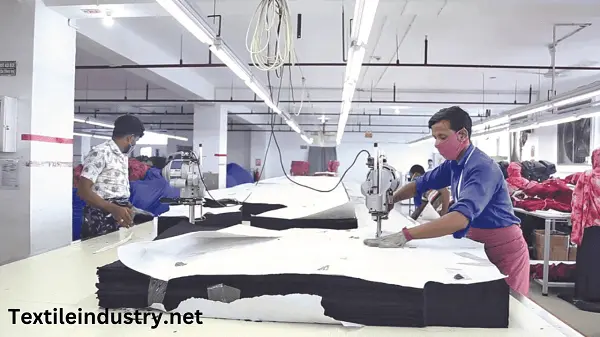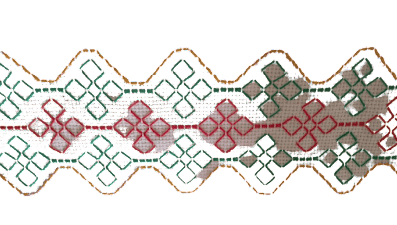Cutting Defects and Causes of Cutting Defects in the Garments Industry
In the cutting department of the Garments industry, Cutting defects can have a significant impact on the overall production process, leading to increased costs, wasted materials, and customer dissatisfaction. Understanding the causes of cutting defects in the garments industry is essential for manufacturers to implement effective solutions and improve their production efficiency.
Pattern inspection is a big part of the cutting room. If the pattern is not properly aligned then the process may lead to wrong cutting. If the pattern is not placed properly then the outside edge of the cutting becomes faulty. If the pattern moves to a smaller place than the pattern required then there will be a worn edge fault found. That leads to puckering when the garment is sewn together because of the wrong cutting. Displaced notches and drill marks, not having enough knife clearance, and wrong checkboxing all can hamper the quality of the final product.
What are the Cutting Defects Produced In the Garments Industry?
- Miss cut
- Running shade
- Matching plies
- Numbering &bundling
- Bowing in Fabric
- Notch mark
- Narrow goods
- Rugged cut
- Fabric way
- Measurement Updown
- Leaning
- Tension Loose
- Biased Fabric
- Alignment
- Skew
- Pattern Missing in Marker

Details Description of Cutting Defects in the Garments Industry
Miss cut
Mistakenly the cuter man followed the pattern, as most of the cutting process is manual in the garments industry. Missing the cutting line is a missed cut in the garments industry.
Running shade
Shade variation in the roll lengthwise, some distances have one shade and another.
Matching plies
Each ply of Fabric under one layer has to match with each other.
Numbering & bundling
Improper numbering and bundling a critical defects in garment manufacturing.
Bowing in Fabric
Bowing fabric in the cutting room can be a common issue in the garment industry. “Bowing” refers to the fabric becoming distorted or skewed, which can lead to inaccuracies in cutting patterns.
Notch mark
Notch marks play a crucial role in the cutting process, especially in garment and pattern-making. Notches are small, triangular, or V-shaped marks placed along the edges of pattern pieces.
Narrow goods
“Narrow goods” in the context of the cutting process refer to fabrics or materials that are relatively narrow in width compared to standard fabric rolls.
Rugged cut
This is the opposite word of even cutting. Cutting operator
Fabric way
According to fabric construction, woven and knit fabrics have weaving or knitting yarn placement way. Cutting rooms have to follow the buyer-approved sample to maintain the right fabric way.
Measurement
The cut panels have to match the CAD pattern spec. The cutting process has to be precise and even more or less than 1 mm deviation is a defect.
Leaning
Fabric edge drape to lower is called leaning in the garments industry.
Tension Loose
Incorrect ply tension can lead to various sizes and parts missing bits in the parts of the garment.
Biased Fabric
The filling yarns are not square with warp yarns on woven fabrics or theirs are not square with wale lines on knits is a bias defect of Fabric.
Alignment
Uneven or inaccurate notches and slits can lead to problems during sewing, such as misalignment of seams and patterns.
Skew
When fabric layers shift during the cutting process, it can cause pieces to be cut at an angle, resulting in irregular seams and fit issues.
Pattern Missing
It can happen due to the missing pattern or some part of the pattern from the marker. If the marker is not labeled correctly that also can create defects or mixed up of sizes of garments product. If the pattern is not facing the right direction then the design of the products may vary from the standard.
Causes of Cutting Defects
- Human Error: One of the primary causes of cutting defects is human error. Even the most skilled operators can make mistakes, such as misalignment, inaccurate measurements, or uneven cutting. Both Straight Knife and Round Knife Cutting Machines are used mostly in the garments industry. Operator skills are the key to getting rid of cutting defects.
- Poor Equipment Maintenance: Dull blades or malfunctioning cutting machines can lead to irregular cuts, fraying, and other defects. Regular maintenance is crucial to prevent these issues.
- Inadequate Training: Insufficient training of cutting machine operators can result in mistakes and defects. Proper training programs should be in place to ensure proficiency and accuracy.
- Material Quality: The quality of the fabric itself can contribute to cutting defects. Uneven tension, loose weaves, or unstable materials can be challenging to cut accurately.
- Pattern Preparation: Incorrect pattern preparation, such as scaling errors or inaccuracies in pattern placement, can lead to cutting defects that affect the garment’s overall quality.
Conclusion
Cutting defects in the garments industry can lead to significant quality and cost challenges. Identifying the causes of these defects and implementing effective solutions is crucial for manufacturers to improve their production processes, reduce waste, and deliver high-quality garments to their customers. By prioritizing training, maintenance, and quality control, the garments industry can minimize cutting defects and enhance its overall efficiency and reputation.
- Additionally, You may love to read: Different Types of Defects in Garments and their Classifications
- Packaging Defects Found in Garments Industry
- Product Safety and Regularity Defects in the Garments Industry
- List of Sewing Defects found in Garments Industry
- Stitching: Sewing Defects in Garments
- Sewing Defect with Root Causes and Corrective Actions
- Major, Minor, and Critical Defects in Garments Industry


